How do animals without lungs breathe?
By Devendra Narayan, PhD.
The blog post is part of the Better Breathing through Science series.
Humans and many small and large animals use their lungs to exchange Oxygen and Carbon dioxide in and out of their body. But not all breathe this way. Single-celled organisms and worms, for example, breathe through their skin. Likewise, insects and fish breathe using different mechanisms.
Let’s look at the fascinating ways these animals breathe.
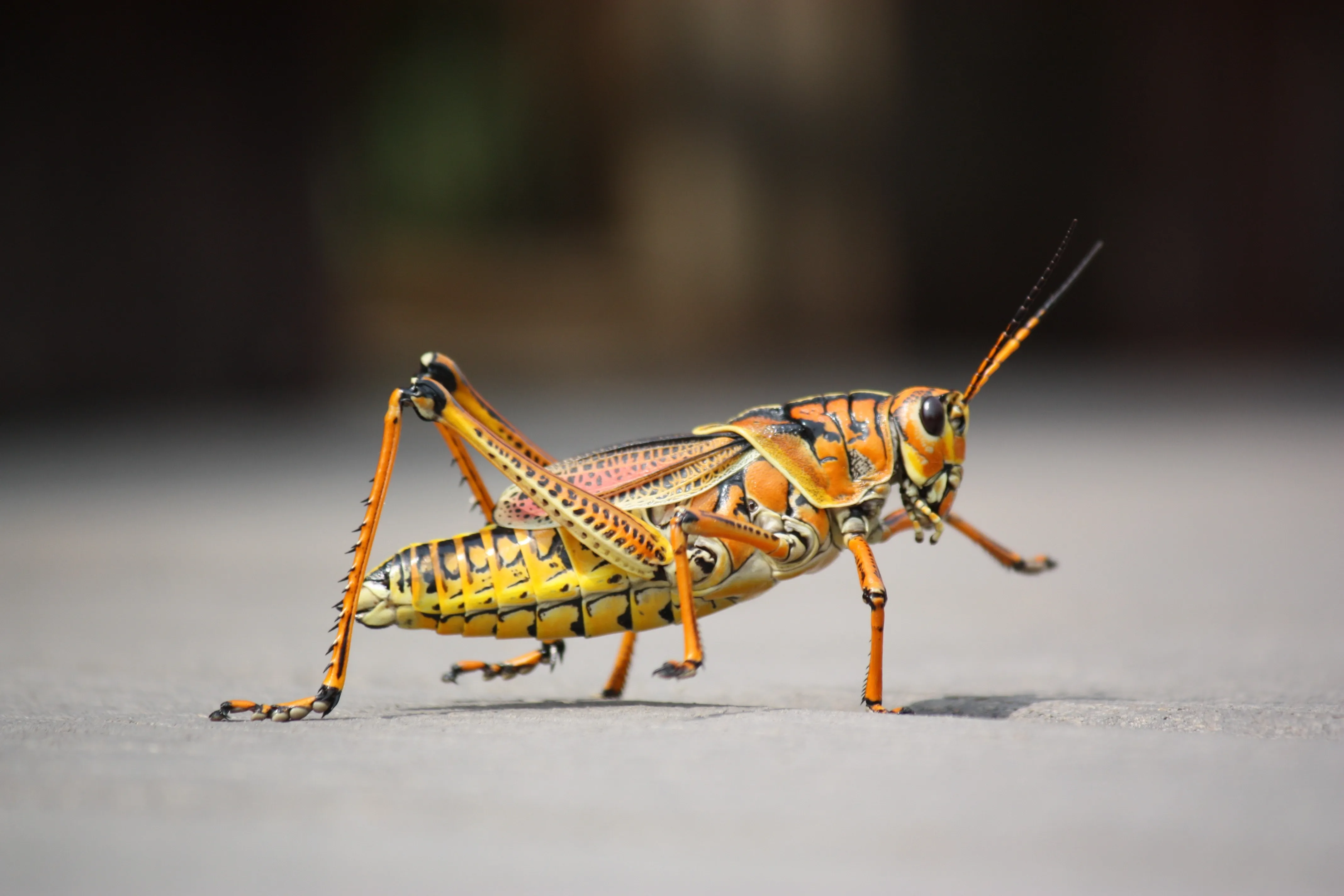
Photo by Pixabay
Breathing through diffusion
Let's start by understanding the law of diffusion, which states that gas molecules move from areas of high concentration (pressure) to areas of low concentration (pressure).
When someone wearing perfume walks by you, or when you drive down a country road and smell that skunk odor. The reason is that gas molecules diffuse from a high concentration area (the person wearing perfume, for example, or a dead skunk) to a low concentration area (where you are).
A single-celled animal or plant get oxygen by diffusing through their membrane. Oxygen moves from the outside to the inside of the cell and carbon dioxide moves in reverse. This is called direct diffusion.
A simple but elegant mechanism that works for one-celled organisms on land and in water.
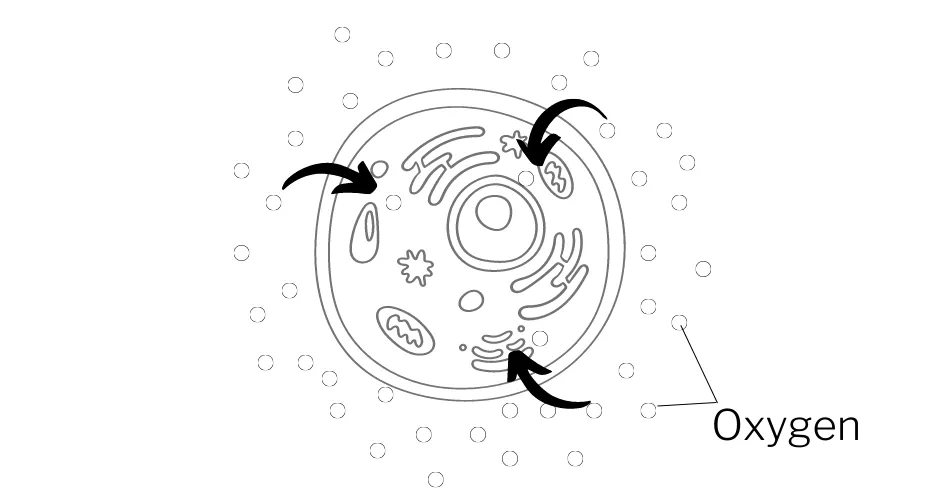
Schematic of Direction Diffusion through the membrane of a cell.
So why can’t all living organisms get Oxygen via direct diffusion?
Let’s have a look.
Let's consider a small organism with 24 cells. The organism is shaped like a ball with the cells arranged in a spherical fashion and cell number 24 is in the center.
It sounds like Cell 24 is one of the most comfy cells in the place because it's surrounded by all the other cells.
Well, Cell 24 has a big problem!
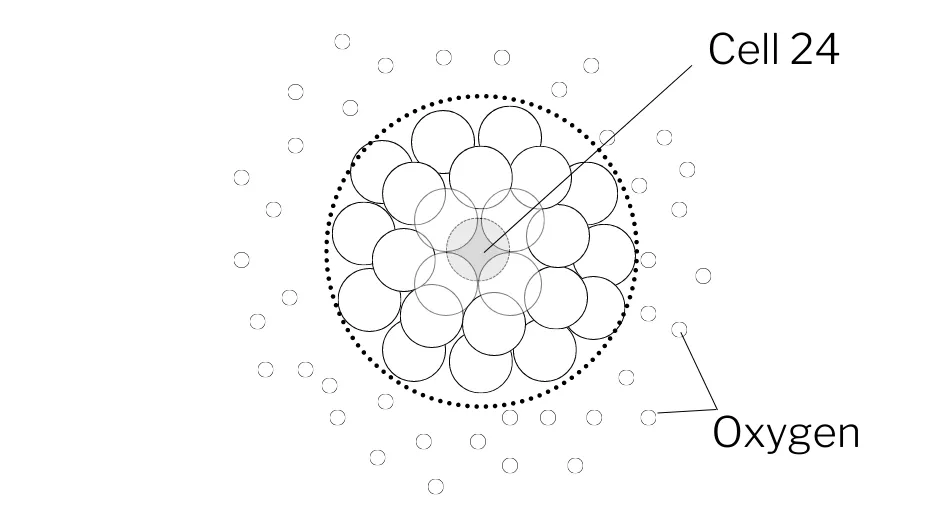
Schematic of Direction Diffusion in a spherical organism with 24 total cells. Cell 24 is at the center, surrounded by other cells.
All cells need oxygen to function and survive and the cells nearest the skin receive oxygen via direct diffusion. A layer below that, cells get a little less Oxygen as the outer layer of cells have already absorbed some. What about Cell 24?
Like all cells, it needs Oxygen, but can’t get enough because all the neighboring cells have already consumed most of the Oxygen from the diffused air molecules. As a result, Cell 24 is left with little to no Oxygen.
Now, Cell 24 has 2 options. It can either reduce its function or it can die. What do you think happens to the cell? Initially, the cell can slow down its function but that won’t be sustainable in the long-term and the cell will die.
So how does nature solve the fundamental problem of survival in multicellular organisms?
Multicellular organisms need oxygen to make sure every individual cell has enough of it. There are three ways in which this can happen.
By making the organism thin.
Kelp is a form of algae that grows underwater and can be up to 75 meters long. It delivers oxygen to all cells through its thin form. A thin body means that all the cells in the animal or plant will be close to the air or water in which it lives. Thus all cells will be able to get Oxygen via direct diffusion. Flatworms breathe through their skin. However, living things that are thin must live in water or moist places.
By letting Oxygen in.
Some plants and animals use pores, channels or tubes to let Oxygen in. These structural features bring Oxygen close enough to individual cells so diffusion can take place. Sea sponges have small pores on their outer surface that connect to canals that travel throughout the sponge’s body. The Oxygen dissolved in water diffuses into sponge cells.
Some insects also let Oxygen in through canals and tubes. A grasshopper, for example, has special tubes that take air deep inside its body. Oxygen diffuses from the air in the tubes into the grasshopper’s cells, which are in proximity to these air carrying tubes.
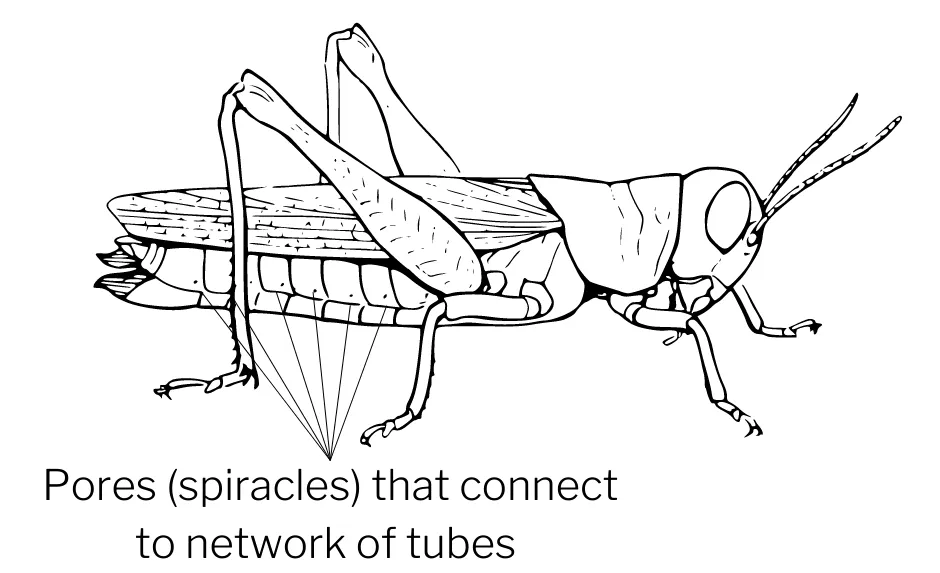
Schematic of a Grasshopper depicting spiracles on the sides, which are pores that let air in. Air travels through tubes that are spread across the body of the Grasshopper.
By moving Oxygen around.
Large animals have trillions of cells that are far away from the direct source of oxygen, which can be a problem if your body doesn't deliver enough. The process for this is actually rather clear: Oxygen is carried to each cell in the body by blood, which also carries nutrients of course.
To constantly move Oxygen through their bodies animals usually need the following:
1. A fluid to carry the Oxygen - blood
2. A pump to move the Oxygen around - heart
3. A network of channels to circulate the blood to all parts of the body - blood vessels
4. A place where blood can pick up Oxygen - Lungs or gills
Let’s have a look at how Oxygen enters the blood through gills and lungs.
Many living organisms that live in water have gills. Gills are organs where blood vessels come close to the source of oxygen, which is usually dissolved Oxygen in water..
A fish’s Gills are located behind its head. Water enters through the fish’s mouth, through its gills, and out through the slits of the gills. As water flows through the gills, Oxygen diffuses from the water into the tiny blood vessels that line up the gills.

Water with dissolved Oxygen enters in through the mouth of fish and comes out from the slits in the gills. Oxygen diffuses through vessels lining up the insides of gills.
Some animals that live on land have book lungs which they use to breathe. These organs look and function like gills, but they are found in animals that do not get their oxygen from water like spiders and scorpions. Their name is indicative of their structure, which is alternating folded plates (leaves) of tissue filled with blood, giving them an appearance similar to a book.
A spider has a small slit on its underside through which air can enter and make its way to the book lungs. Air enters the space between the folded plates, which are lined up with blood vessels that absorb Oxygen through diffusion and carry it to the rest of the spider’s body.
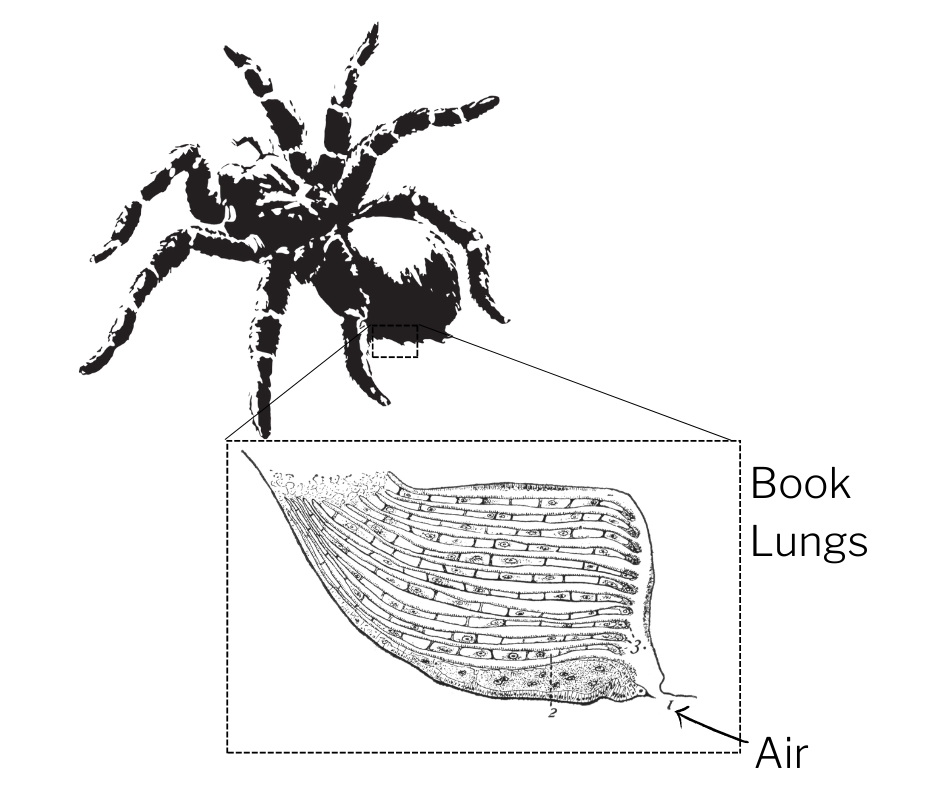
Diagram of spider book lungs. (1) lung slit, (2) space filled with blood, (3) leaves of the book lung. By John Henry Comstock - Scanned from the 1920 edition of The Spider Book, published by Doubleday, Page & Company in the United States (originally published in 1912), Public Domain, https://commons.wikimedia.org/w/index.php?curid=8754431
We humans have lungs and so do all mammals, birds, reptiles and some amphibians. All lung tissues have blood vessels running through them and around them for Oxygen and Carbon dioxide exchange. When we breathe, air enters the lungs then divides into smaller and smaller channels till it reaches a dead-end air space called an air sac (alveoli).
The Oxygen exchange from the lungs into the blood occurs via diffusion from the walls of the alveoli, which are wrapped around with tiny blood vessels (capillaries). On the other end, Oxygen is delivered to every cell in the body via diffusion from the capillary walls into the cells.
So you can see, diffusion is the fundamental driving force that operates gas exchange in all living creatures and explains the role of respiration.
About the Author
Devendra Narayan is a scientist, yoga teacher, breathworker, scholar and founder of Cultivate Prana Academy. Cultivate Prana's mission is to empower modern day healers through education that integrates ancient wisdom and modern science.
-------
Copyright 2022 Cultivate Prana LLC. All rights reserved.

.png)